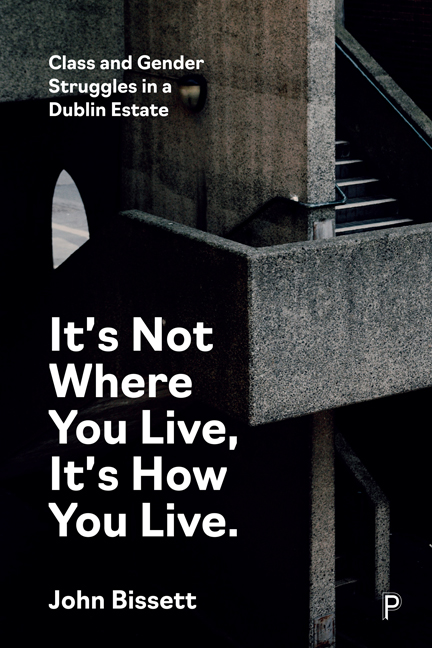Summary
Being is never me alone, it is always me and those like me. (Georges Bataille, Oeuvres. Completes 8:297, quoted in Jean Luc Nancy, 1991, p 33)
Given that they are on the one hand so prominent while on the other almost invisible, it may seem strange to ask: what sort of a thing or object, then, is a public housing estate? How and by what is it constituted? My conclusion from this work is that public housing estates are not just the locations of but are constituted and utterly defined by class and gender relations and processes. This may seem obvious, but I want to argue, especially in the latter half of the book, that public housing estates are social forms that embody and reflect the stratified, differentiated and realist nature of the societies we live in. They are ‘real’ objects that contain within themselves the sediment and (continually changing and moving) geology of class (Savage, 2015) and gender structures. Trying to describe, analyse and specify the significance of such relations, mechanisms and processes is the focus of this book. This is therefore an attempt to engage dialogically with the object that is a public housing estate in order to maximise explanatory power and to make ‘the analysis as precise, but only as precise as the nature of the subject permits’ (Bhaskar 2009, p 168). The reason why this is important is because such mechanisms and the processes they entail are, more often than not, unperceivable, and are visible only in their effects. I will argue, therefore, that as well as understanding what we perceive there is also a need for causal criteria for understanding the ongoing reproduction of public housing estates. Sayer (2000, p 149) underlines the nature of this problem when he says that ‘Grasping the whole is more difficult than grasping what happens next in the story.’ The whole, as it were, and such effects, are what characterise the Bridgetown Estate and are evident in the ethnographic chapters that follow. The people who live here are labourers, care workers, retail workers, hospital workers, factory workers, truck drivers, make-up artists, taxi drivers, bricklayers, carpenters, plasterers, employees of multinational companies, state employees, shop workers, community workers, community employment workers. They are also quite often ‘the unemployed’. They therefore occupy particular positions within the social system.
- Type
- Chapter
- Information
- It's Not Where You Live, It's How You LiveClass and Gender Struggles in a Dublin Estate, pp. 1 - 12Publisher: Bristol University PressPrint publication year: 2023



